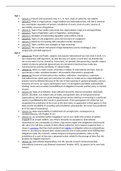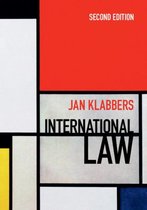Part I
Lecture 1: Primary and secondary rules, H. L. A. Hart, chain of authority, rule validity.
Lecture 2: What is a legal system, a legal tradition and international law, civil law & common
law, sovereignty, separation of powers, jurisdiction of courts, level of courts, sources of
law/validity, structure of legislation.
Lecture 3: Types of law, public and private law, Legal subjects, legal acts and legal things.
Lecture 4: Types of legislation, parts of legislation, methodology.
Lecture 5: Strategies of interpreting legislation (and conflicts with it)
Lecture 6: Types of case judgement, parts and structure of a judgment
Lecture 7: Elements of reasoning with precedent (earlier decisions)
Lecture 8: Types, conflicts and strategies of legal reasoning
Lecture 9: The circulation and spread of legal institutions (and its challenges), class
assignments and ANP-Approach.
Part II
Lecture 10: Private and Public, subjects and purpose international law, how does it work, is it
law? Global law, ANP-approach. Lex lata (the law as it exists, current law), lex feranda (the
law as you want it to be, should be, future law), lex specialis (law governing a specific subject
matter) trumps lex generalis (general law), lex mercatoria (merchant law, trade law,
Commercial law used by merchants, it’s about trade).
Lecture 11: When is a state a state, what does a subject of international law have, how do
you become a state, self-determination. Uti possidetis (that which is possessed).
Lecture 12: Sources of international law, treaties, ratification, reservations, customary
international law, opinio juris sive necessitas (an action is carried out as a legal obligation, a
practice must be followed because of the rule of law requiring it), general principles, sources,
hierarchy of norms, ius cogens (peremptory norm, no derogation permitted, automatically
binding). Pacta sunt servanda (nonfulfillment of obligations towards another party is a breach
of pact).
Lecture 13: Types of jurisdiction, state (officials) immunity, Vienna Convention, diplomatic
asylum, sanctions. Jure imperii (acts of state), jure gestionis (acts of non-governmental
organisations), persona non grata (foreign person whose entering or remaining in a particular
country is prohibited by that country's government), forum prorogatum (If a State has not
recognized the jurisdiction of the Court at the time when an application is filed against it, that
State has the possibility of accepting such jurisdiction subsequently: the Court has jurisdiction
as of the date of acceptance).
Lecture 14: State responsibility & (settlement of) wrongful acts, consequences &
countermeasures, UN Chapter VI, ICJ.
Lecture 15: Jus ad bellum (before engaging in war) & jus in bello (the conduct of parties
engaged in an armed conflict), use of force (breaches & exceptions), International
Humanitarian Law, combatants & civilians. Erga omnes (rights and obligations owed toward
all), ultra vires (off duty, outside of their official authority), force majeure (superior force, a
clause in contracts that frees both parties from liability or obligation when an extraordinary
event or circumstance beyond their control prevents one or both parties from fulfilling their
obligations under the contract), ratione temporis (temporal jurisdiction, refers to the
jurisdiction of a court of law over a proposed action related to the passage of time (has the
deadline for litigation expired?).
Lecture 16: International Organisations, the UN, Security Council, General Assembly,
International Economic Law, Bilateral Investment Treaties, WTO. Sui generis (of its own kind,
unique).
, Lecture 17: International Human Rights law, (Universal Declaration of) Human Rights, treaties
after ratification, Group Rights, Refugee Law, International Criminal Law, right to have rights.
Mens rea (one had the intention to commit a crime).
, PART I
Lecture 1
H. L. A. Hart
Primary rules – create rights (abilities) and duties (obligations) of behaviour:
uncertain, static, inefficient (we don’t know why we should consider them as rules,
valid or invalid).
Secondary rules – rules of recognition (how to identify a valid legal rule), rules of
change (how rules are introduced, removed, adapted and transformed) and rules of
adjudication (who and how it is determined whether a rule has been broken).
To say that a given rule is valid is to recognize that it is passing all the tests provided by the
rule of recognition and so as a rule of the system (Hart, page 103).
Law as a chain of authority
Constitution Act of Parliament Administrative Rule
Example: The Emissions Authority creates a rule that all power plants operated in the
Netherlands need to monitor and report the amount of C02 emissions that they discharge
Why is this rule ‘’valid’’?
Constitution enables Parliament to create public administrative bodies (Article 134) the
Environmental Management Act creates the Emissions Authority (Article 2) the Emissions
Authority creates a rule in line with its tasks.
The validity of the ultimate rule of recognition is ‘assumed but cannot be demonstrated’
(Hart, pg. 109)
“…whereas a subordinate [primary] rule of a system may be valid and in that sense ‘exist’
even if it is generally disregarded, the rule of recognition exists only as a complex, but
normally concordant, practice of the courts, officials, and private persons in identifying the
law by reference to certain criteria. It is a matter of fact.” (Hart, pg. 110)
Legal education is training in the internal perspective of the law.
Lecture 2: From the general concept of law to specific legal systems
A legal system: a set of legal institutions, procedures and rules. Commonly associated with
nation states (borders) Vb the Netherlands has another legal system than a state in the US.
International law: system(s) of law. Vb United Nation. Treaties, not constitutional. It’s a
collection of systems. It’s an agreement between the different parties, it’s not based on your
own sovereignty.
A legal tradition: a group or family of legal systems with historically shared attitudes, styles,
influences about the organization and operation of the legal systems (2 main traditions:
Common Law & Civil Law traditions). It’s a cheat sheet to understanding the Rule of Law
within nation borders.
CIVIL LAW (450 BC - present) COMMON LAW (1066 AD – present)
Eastern Roman Empire & Justinian’s Corpus Juris William I & Norman invasion of British Isles (he
Civilis (6th Century AD): the round table, not really allowed all local courts to continue using their own
written laws (referring to ancient ways of handling unwritten law claims all British isles gives land
disputes) away to nobility in exchange for fees, taxes and
support disputes set of basic rules: WRIT’s
Local Customary laws (very unorganized) Feudalism, the Crown, teh Curia Regis & Circuit
Judges (Royal Law as ‘Common Law’)
, Bologna’s Law School, jus commune (‘common The Writ system (when disputes appear, this is
law’) & canon law (: Law of the catholic church) what you should do as judge, written by William I,
(everyone being sent there to ‘learn the law’, civil very easy), emphasis on procedure, the jury and
code of intellectual reasoning, not officially questions of fact
recognized)
Common commercial law (maritime cities, guilds, Lord Chancellor (member of the court of William I,
designed to help trading in ports because of the you need to specify what Writ applies and buy that
inefficiency with all different laws coming specific one form them and give that Writ to the
together), very little public law (non-existing back judge. What needs to be decided is already on the
then) paper, the judge just needs to make clear if that is
what happened or not: procedural law, did this fact
occur? Jury made out of citizens supports the judge
with each their own ideas, preferences or prior
knowledge: bias) & Equity (‘eigen vermogen’, giving
the land to a friend to hold for when the child is old
enough to rain the land. What if the friend didn’t
want to give it back? There was no contract: quid
pro quo, there was no written Writ injustice
Second set of law: the Law of Equity, set of
principles, Law Vs Courts of Equity mixing)
The French Revolution & Enlightenment, state- Gradual development of Parliament (authority of
building and national codification (all these diverse parliament grew, authority of the monarch grew
codes are very inefficient, causing confusion. smaller. It’s more efficient to write new laws
Revolution resistant against judges, looking for (Parliament), than for judges to always try and fit
ways to protect their rights as individuals against new cases into the ruling of older cases and try to
the state civil code (instead of using all these base the verdict on that outcome)
different codes per region, let’s make it
nationwide, so there would never be any grey
areas ever again and there would be no room for
judged to have their own interpretations.)
Sovereignty – Bodin (1576): ‘The most high, absolute and perpetual power over all citizens
and subjects in a commonwealth (state)’.
Peace of Westphalia (agreement among all the monarchs that they were going to
respect each other’s sovereignty over itself
Internal (within borders) Vs. External (no other country has a say over me)
sovereignty
The French Revolution & the Seperation of Powers
Legislative – to create, change and nullify laws (Parliament)
Executive – to implement the laws of the legislative branch (the head of government,
prime minister, ministries).
Administration – to develop further policies & rules to enact legislation, to
adjudicate disputes related to these rules.
Judicial – to apply laws to disputes (interpret laws)
Jurisdiction of the court
In rem – by subject matter of dispute
In persona - by identify to the parties involved
Territorial jurisdiction (*international law) – by location in which the acts of
the dispute occurred, the location affected by the actions of the dispute (if
you do not live within a certain territory the jurisdiction of that territory
doesn’t apply to you).
Multi-level court systems





